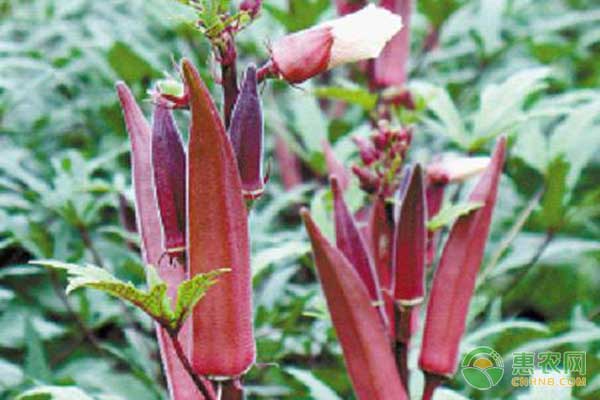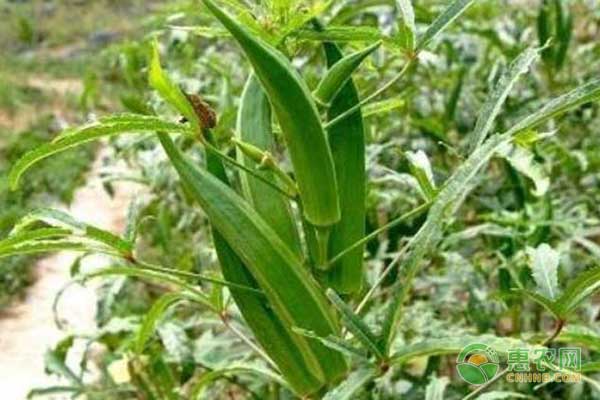Okra has high nutritional value, high yield and health care function. It has been very popular among consumers in recent years. In addition, the okra also has cosmetic value, and the planting prospects are good. The following is a brief introduction of the practical planting techniques of the okra.

1 trait efficacy
Okra is also known as tonifying grass, croissant, and sauerkraut. It is an annual herb of the genus Okra. Okra fruit contains a kind of viscous liquid and arabinose, galactan, rhamnose, protein, etc., often eat to help digestion, enhance physical strength, protect the liver, stomach and intestines; okra contains iron Various nutrients such as calcium and sugar have the effect of preventing anemia; it contains vitamin A and beta-carotene, which is good for retinal health and maintains vision; it is rich in trace elements such as zinc and selenium, which can help the human body. Anti-cancer, anti-cancer; also rich in vitamin C and soluble fiber, not only has a health-care effect on the skin, but also can make the skin white and delicate; okra is also rich in calcium, its oxalic acid content is low, so the absorption and utilization of calcium The rate is higher than that of drinking milk; mucin in okra has the effect of inhibiting sugar absorption, so it has been used as a prescription for treating diabetes in recent years; okra also contains special medicinal ingredients, which can strengthen kidney Virtual, adjuvant treatment of male organic diseases. Seeds can be oiled, and okra oil is a high-grade vegetable oil that has far more nutrients and aroma than sesame oil and peanut oil.
2 Preparation before broadcasting
Okra is a high-stalk vegetable, and the root system is developed deep and wide. Therefore, the soil layer must be deep, loose and fertile. The well-drained loam or sandy loam is suitable, and the soil can be planted with weak alkali. Okra should avoid continuous cropping, it is best not to be continuous with fruit vegetables to avoid root-knot nematodes, it is best to choose root vegetables, leafy vegetables, etc. for the first time. The result of the okra is fast, the yield is high, the amount of fertilizer is large, and the soil base fertilizer is to be adequately applied. The 667 m 2 vegetable field requires 30 kg of diammonium phosphate, 10 kg of urea, 7-8 kg of potassium sulfate, and 2 to 3 m 3 of organic fertilizer.

3 sowing
3.1 Variety selection
The okra should be a variety of early-maturing dwarf plants with obvious angularity of the fruit. The commonly used ones are: New Tokyo No. 5, Taiwan Five Fortunes, and Beautiful Pentagon. Some stalk varieties can also be introduced, such as Yang Guifei, Emerald, and the Virgin. There is also a kind of red okra on the market, which is a kind of okra, and the yield is lower than that of okra.
3.2 Seed treatment
The seed coat of the okra seed is thicker and needs to be soaked and germinated before sowing. It can be germinated by immersion in water at 30-35 °C for 10 h, then germinated at 25-28 °C. After about 24 h, the seeds begin to sprout, and when 1/2 of the seeds are white, they can be sown.
3.3 Sowing date
Okra is not suitable for early sowing. The northern Xinjiang from the end of April to the beginning of May can be planted at a temperature of 14 to 15 °C.
3.4 Seeding method
In the open field cultivation, the drip irrigation cultivation mode under the membrane can be adopted. The mulch film is 0.02 mm film, and a film of 4 rows of okra is used for 2 drip irrigation belts. The 4 rows of okra are sown in wide and narrow rows, with a row spacing of 40 cm and a planting distance of 40 cm and a depth of 3 to 4 cm.
3.5 weeding
After the sowing, the okra was treated with 48% zhongdingling emulsifiable concentrate 3 000 times before the seedling, and the amount of 667 m 2 was 250 mL. It was broadened to the dentate, iron leeks, relicula, spirulina, crabgrass, valerian, etc. Leaf weeds and grass weeds have good control effects and do not affect emergence. The roots, stems and leaves of okra seedlings grow normally.
3.6 Seedling transplanting
Seedlings were planted in Yangshuo and solar greenhouses in the middle of March. A 12 cm diameter nutrient meal was selected and 2 seeds per seed. The seedling age is 30 to 40 days, and the seedlings can be colonized when they have 2 to 3 true leaves.
4 Field management
4.1 Topdressing
The result of the okra is long. In order to ensure sufficient nutrients throughout the growing period, in addition to applying the base fertilizer, it is necessary to strengthen the topdressing. In the early stage of growth, nitrogen fertilizer was the main factor, and in the later stage, phosphorus and potassium fertilizer were the main. It can be applied with water monoammonium phosphate plus urea, and each time with 5 kg urea + 5 kg monoammonium phosphate, the results are applied 3 to 4 times. In addition, the 0.3% potassium dihydrogen phosphate solution was sprayed on the foliage 2 to 3 times.
4.2 Pruning
Okra is mainly based on the results of the main stem. When the base leaf buds are lateral buds and side branches, the main branches grow to a height of 50-60 cm and then the hearts are taken, so that the nutrients are concentrated for flowering. After harvesting the tender fruit, the lower part of the leaf is preserved and the following leaves are removed, and the following leaves are removed, and the lateral branch of the base is removed to improve the light-receiving state of the leaves at the bottom of the plant, and the fruit setting is promoted, and the bottom of the plant is well ventilated, which also reduces the occurrence of pests and diseases. In addition, leaf picking also has the effect of regulating plant growth. Leaf picking is generally carried out in the middle and late growth stages. The lateral branches under thin planting are generally allowed to grow. If there are too many side branches, they should be properly pruned.

5 pest control
The main pests of okra are aphids, cotton bollworms and spotted flies. The control of aphids can be sprayed with 10% imidacloprid EC 3 000 times or good winter emulsifiables 3,000 times; the control of cotton bollworm with 5% taiji emulsifiable concentrate 1500 times liquid spray; control of larvae
2 000 times liquid spray.
Okra disease is mainly caused by viral diseases and diseases. In the early stage of viral disease, virus A 500-800 times liquid or 83-anti-enhanced agent 100 times liquid foliar spray can be used for prevention and control, and sprayed every 3 to 7 days for 3 to 4 times. Viral diseases are transmitted by aphids, and aphids should be controlled in time. The disease can be treated with 25% azoxystrobin suspension, 667 m 2 of 72 mL, or 75% chlorothalonil WP, 667 m 2 of 146.7 g or 266.7 g, which is safe for okra and the applicator. In the rainy season, there are more lesions on the branches and leaves, and lime is applied in the vicinity of the base of the plant in time to prevent the spread of the disease.
6 harvesting
It takes about 60 days for the okra to form from the sowing to the first tender fruit. Afterwards, the whole harvest period is 60-70 days, and the whole growth period can reach 120 days or even longer. Timely harvesting is the key technology for the production of okra. The products harvested by Okra are tender fruits and the fruits are easily lignosified and aged. The harvest is too late, the fiber is increased, the meat is aged to reduce the quality, and even the edible value is lost. Generally, after 4 to 7 days of flowering, when the tender fruit grows to 5 to 8 cm, it can be harvested. The fruit is bright green, and the seeds in the fruit are not aged. At this time, the best commercial fruit can be obtained. Harvesting should be carried out in the evening, cut from the handle when harvesting, so as not to damage the branches. Generally, after the first fruit is harvested, it is collected once every 2 to 4 days, and the harvesting interval is shortened with the increase of temperature; the fruit is harvested once a day or every other day in August; the temperature drops by 3 to 4 after September. d harvested once. It is usually harvested 4 days after the flowering, and the quality of the tender fruit is the best.
The flowers of the okra can be dried to make a flower tea. It is rich in vitamin C, plant flavonoids, carotene, etc. It has the functions of nourishing and detoxifying and anti-fatigue. The flowers of the okra fall on the eve of the day, usually concentrated at 17:00-18:00 when the flowers are just closed, because the fruit just grows out, which does not affect the results, and effectively maintains the nutrients in the flowers.
During the planting process of okra, it is necessary to do a good job in management and promote its growth and development, so as to increase yield and income. The above is the cultivation technology of the okra. If you want to know more about agricultural technology, please pay attention to the Hui Nong School!
Changzhou Ziying Metal Products Co., Ltd , https://www.ziyingmetal.com